Portable radiation detector
mini Rad -D
Handy Radiation Detecting Equipment
“Mini Rad -D” that protects individuals from invisible danger. It is the lightest and smallest type and detects and discovers hidden radiation.
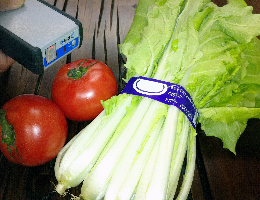 |
The mini Rad-D is a portable high-sensitivity radiation detector. It is a sturdy, all-weather type that can be attached to the user’s waist belt to detect the location of suspicious objects that emit radiation. It has an accurate and high-performance detection function even in a warehouse or in a crowd of people. The detection alarm is given by clearly indicating the vibration / sound signal characters, and the alarm becomes stronger as the object gets closer. In addition, as a major feature, it is equipped with an “automatic calibration function” that automatically detects and confirms the normal radiation level of the background of the object to be detected, and operates when an object with a radiation dose higher than that is detected. Please take advantage of the mini Rad D, which is easy to use, functional, and practical. |
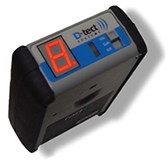 |
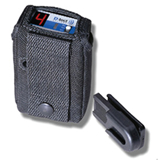 |
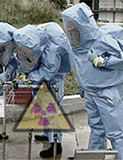 |
Features of mini Rad-D
・ Operates in all weather and all temperatures
・ Extremely low false positive rate
・ Battery life is about 2 years
・ Sturdy package (clears the drop test from a height of about 1m)
・ With beep sound alarm and vibration alarm function (LED numerical level simultaneous display)
・ Can be used near X-ray equipment
・ Easy to operate and ready to use
Radiation detector comparison experiment by US Department of Homeland Security
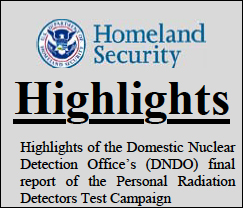 |
In the United States, a survey conducted by the HomeLandSecurity Bureau has shown that the sensing accuracy is very good, according to data compared with those of other manufacturers. |
As of April 2011, Mini RAD-D has been adopted by the following US government agencies.
|
US Department of State and affiliated organizations (US embassies in each country) Department of Defense Military Protection Bureau (Force Protection Agency) Defense Logistics Agency, Department of Defense FBI U.S. Food and Medical Institution (FDA) Home Land Security U.S. Army U.S. police HAZMAT (Dangerous Goods Disposal Team) Philadelphia Waste Disposal Authority |
mini Rad-D specifications
| Detector | Cesium / iodine detector that uses a scintillation detector with a diameter of 1.3 cm and a length of 3.8 cm. |
|---|---|
| Energy range | 30KeV-3MeV |
| Display | Luminous LED |
| Power supply | AA batterie×2 |
| Battery life | 5000 hours (about 2 years) when using alkaline batteries |
| Sensitive time | 1 second or less |
| Alarm type | Vibration: Increased vibration due to the intensity of radiation |
| Calibration | Automatic calibration on switch input. |
| Size | 9.4 x 6.4 x 3.0cm |
| mass | 200g |
| Wearing | Clipped to the waist belt or carried around |
| Environmental condition | Can be used in the rain, can be used day and night, -23 ° C to + 50 ° C, quiet site or noise generation environment, 1m high drop test passed, can be used in high radio wave environment |
| standard | Conforms to US Customs Radiation Detection Equipment Specifications |
This product is calibrated to the reference stage as a level from 1 to 9, but we can also customize the reference value setting that matches the level according to the user’s request.
|Differences from radiation detectors from other manufacturers
・The detection sensor is completely different from the Geiger counter (Geiger-Muller). A typical Geiger counter takes about 3 minutes to measure and can only detect radiation in one direction.
・The detection speed is different from that of a general scintillation type detector. The measurement speed of normal scintillation detection is about 60 seconds, and the detection speed of miniRAD-D is about 1 second. The reason is that it uses a photomultiplier tube called PMT, which enables a much faster detection speed than before.
|About display level guideline
The miniRAD-D is not a numerical value, but a level display, so it is clear which level is a caution or danger level.
Annual radiation allowance set by the government: 20mSV (20000μSV)
Therefore, the area where level 6 is always displayed is the standard of the allowable range.
Levels 1 and 2
Although the value is slightly higher than that of normal natural radiation, it does not affect the human body.
Levels 3 and 4
Although the value is 2 to 3 times that of natural radiation, it does not affect the human body.
Levels 5 and 6
It is within the annual allowance set by the country and does not affect the human body, but always be careful of areas where levels 5 and 6 are measured.
Levels 7, 8 and 9
The area where this value is constantly measured exceeds the annual allowance, so it is necessary to take some measures such as measuring with a dosimeter or staying away from the area.



